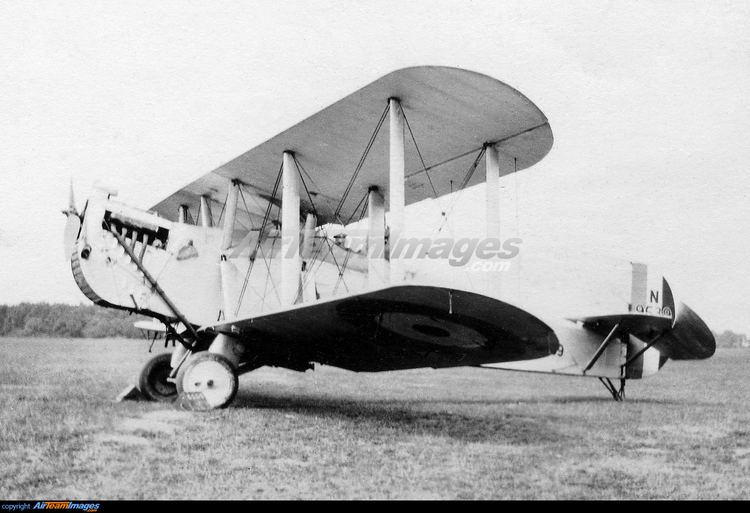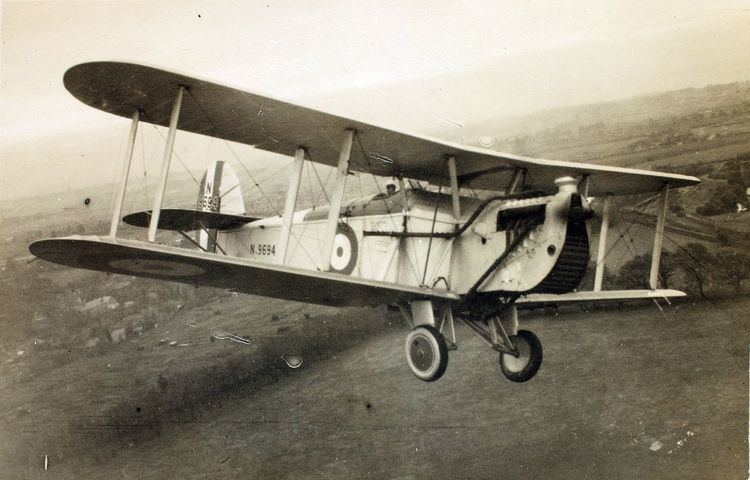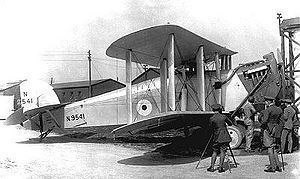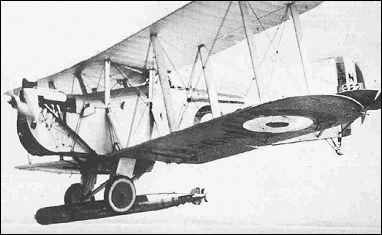Top speed 172 km/h Length 11 m Retired 1933 | Wingspan 14 m Introduced 1922 First flight October 1921 | |
 | ||
The Blackburn Dart was a British carrier-based torpedo bomber biplane, manufactured by Blackburn Aircraft, which first flew in 1921. The Dart was the standard single-seat torpedo bomber used by the Fleet Air Arm from 1923 until 1933. A modified variant was also sold to Greece, where they served with the Greek Navy.
Contents

Design and development

In 1919, Blackburn commenced the design of a private venture, carrier-based torpedo-bomber to replace the Sopwith Cuckoos which were the existing torpedo bombers flying from the Royal Navy's carriers. The Blackburn aircraft, the product of their chief designer, Major Frank Arnold Bumpus, was named T.1 Swift. Although mainly conventional, the large biplane featured two-bay, equal-span wings that were staggered and could fold for storage aboard ship. The wing centre section structure was steel with wooden outer sections, all fabric covered. Ailerons were mounted on all four wings. The fuselage was mounted on the lower wing, and also consisted of a metal structure with fabric covering. The tail unit had a braced tailplane and fin with a balanced rudder. The divided landing gear had mainwheels on oleo legs that allowed the fitting of a standard torpedo below the fuselage.
The prototype Swift first flew in September 1920, almost crashing owing to a miscalculated centre of gravity. This was resolved by sweeping back the wings, while a revised rudder was fitted to improve directional control. Following this, the Swift proved satisfactory, and an order was placed against Specification 3/20 for a further three aircraft for service trials. These were renamed the Blackburn Dart.

The Dart was powered by either a Napier Lion IIB or V engine that was mounted with a thrustline angled upward; the fuselage also dropped sharply downwards from the cockpit.

The prototype Dart was first flown in October 1921, and despite its size handled well, exhibiting a remarkable 43 mph (69 km/h) stalling speed.

An export model of the Dart retained the name Swift and used the 450 hp (340 kW) Napier Lion engine. Seven were built as the Swift Mk II, two for the Japanese Navy, three for the Spanish Navy, and two for the United States Navy. The U.S. Navy aircraft were designated Swift F by Blackburn and Blackburn BST-1 by the U.S. Navy but following competitive trials in 1921, the U.S. Navy decided not to proceed with an order and purchased the Douglas DT-2 instead.
Operational history
The Dart T.2 entered service with the Fleet Air Arm in 1923 with No 460 Flight aboard HMS Eagle stationed in the Mediterranean and with 461 and 462 Flights on HMS Furious based in home waters. Shore training was conducted by "D3" Flight at Gosport. In 1928, the Blackburn Dart flew with Nos. 463 and 464 Flights embarked on HMS Courageous in the Mediterranean fleet. The following year, a single Dart was delivered to No. 36 Squadron RAF (Coastal Defence Torpedo Flight), initially for smokescreen trials and later to form part of the complement of torpedo bombers in the first fully operational Royal Air Force torpedo bomber squadron.
Three Darts were converted into two-seat seaplanes to provide advanced training from 1925 to 1929, at Blackburn's RAF Reserve School on the River Humber. The conversions led to a new variant, the T.3 Velos, which was ordered as a torpedo bomber by the Greek Navy in 1925.
The Dart continued in service with the Blackburn Reserve School, alongside a number of T.3s converted to landplanes until their eventual replacement by Ripons and Baffins in 1933.
One notable event marked the career of the Dart; Air Commodore G.H. Boyce became the first pilot to carry out a night deck landing, when he landed his Dart aboard Furious on 6 May 1926. The flight deck was illuminated by floodlights for the attempt but the docile Dart easily handled the task.
Variants
Operators
Specifications (Dart T.2)
Data from Jane's Encyclopedia of Aviation.
General characteristics
Performance
Armament
